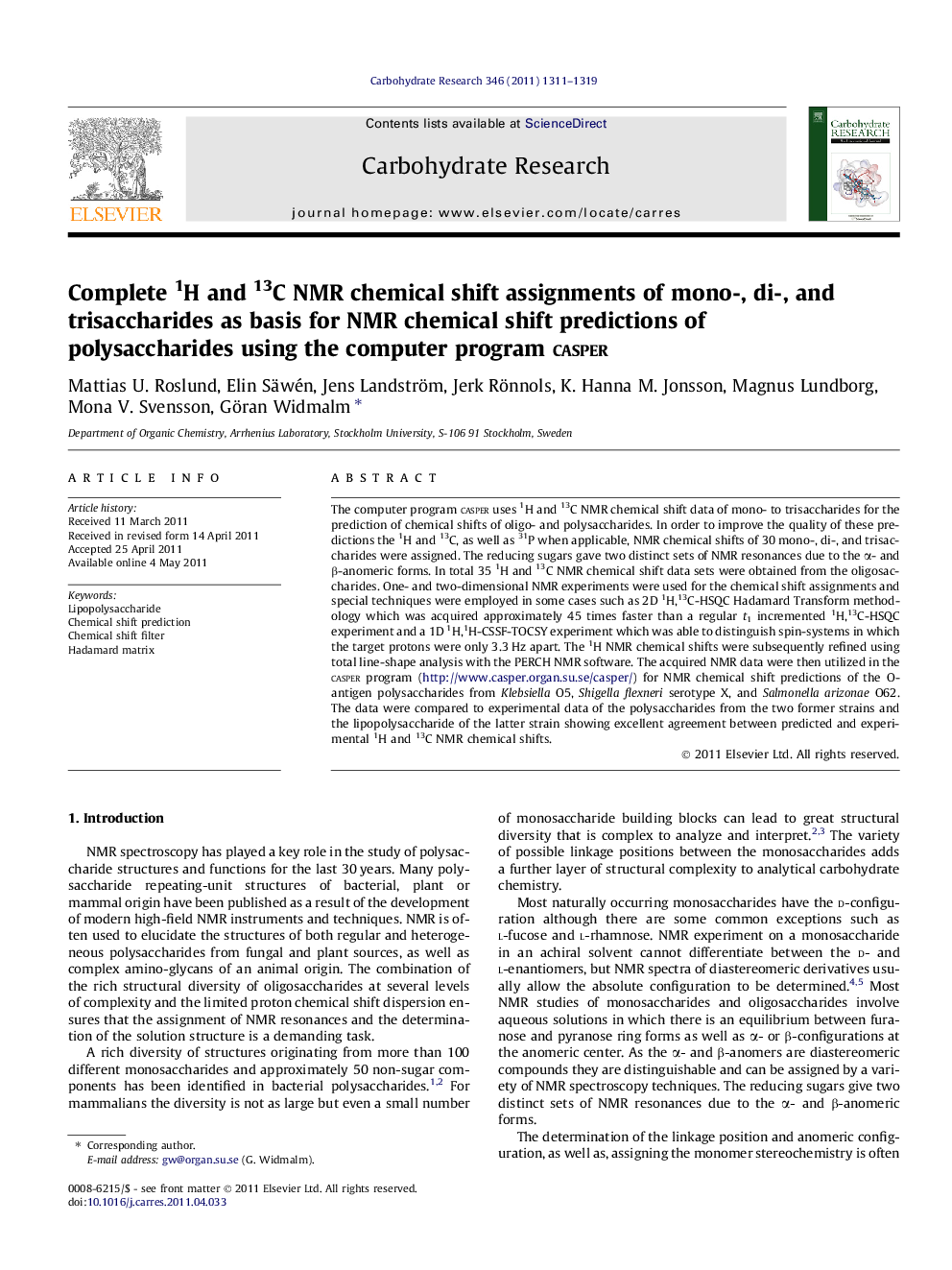| Article ID | Journal | Published Year | Pages | File Type |
|---|---|---|---|---|
| 1384502 | Carbohydrate Research | 2011 | 9 Pages |
The computer program casper uses 1H and 13C NMR chemical shift data of mono- to trisaccharides for the prediction of chemical shifts of oligo- and polysaccharides. In order to improve the quality of these predictions the 1H and 13C, as well as 31P when applicable, NMR chemical shifts of 30 mono-, di-, and trisaccharides were assigned. The reducing sugars gave two distinct sets of NMR resonances due to the α- and β-anomeric forms. In total 35 1H and 13C NMR chemical shift data sets were obtained from the oligosaccharides. One- and two-dimensional NMR experiments were used for the chemical shift assignments and special techniques were employed in some cases such as 2D 1H,13C-HSQC Hadamard Transform methodology which was acquired approximately 45 times faster than a regular t1 incremented 1H,13C-HSQC experiment and a 1D 1H,1H-CSSF-TOCSY experiment which was able to distinguish spin-systems in which the target protons were only 3.3 Hz apart. The 1H NMR chemical shifts were subsequently refined using total line-shape analysis with the PERCH NMR software. The acquired NMR data were then utilized in the casper program (http://www.casper.organ.su.se/casper/) for NMR chemical shift predictions of the O-antigen polysaccharides from Klebsiella O5, Shigella flexneri serotype X, and Salmonella arizonae O62. The data were compared to experimental data of the polysaccharides from the two former strains and the lipopolysaccharide of the latter strain showing excellent agreement between predicted and experimental 1H and 13C NMR chemical shifts.
Graphical abstractFigure optionsDownload full-size imageDownload as PowerPoint slide
